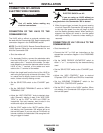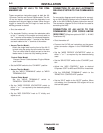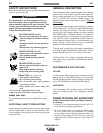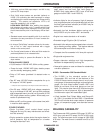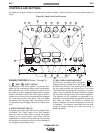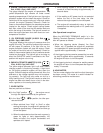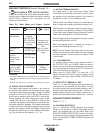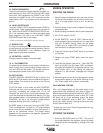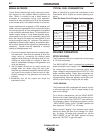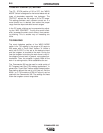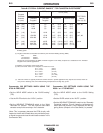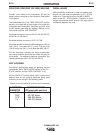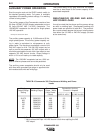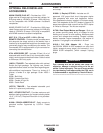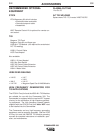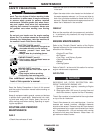
B-7
OPERATION
B-7
BREAK-IN PERIOD
Lincoln Electric selects high quality, heavy-duty indus-
trial engines for the portable welding machines we
offer. While it is normal to see a small amount of
crankcase oil consumption during initial operation,
excessive oil use, wet stacking (oil or tar like substance
at the exhaust port), or excessive smoke is not normal.
Larger machines with a capacity of 350 amperes and
higher, which are operated at low or no-load conditions
for extended periods of time are especially susceptible
to the conditions described above. To accomplish suc-
cessful engine break-in, most diesel-powered equip-
ment needs only to be run at a reasonably heavy load
within the rating of the welder for some period of time
during the engine’s early life. However, if the welder is
subjected to extensive light loading, occasional moder-
ate to heavy loading of the engine may sometimes be
necessary. Caution must be observed in correctly
loading a diesel/generator unit.
1. Connect the welder output studs to a suitable resis-
tive load bank. Note that any attempt to short the
output studs by connecting the welding leads
together, direct shorting of the output studs, or con-
necting the output leads to a length of steel will
result in catastrophic damage to the generator and
voids the warranty.
2. Set the welder controls for an output current and
voltage within the welder rating and duty cycle.
Note that any attempt to exceed the welder rating or
duty cycle for any period of time will result in cata-
strophic damage to the generator and voids the
warranty.
3. Periodically shut off the engine and check the
crankcase oil level.
TYPICAL FUEL CONSUMPTION
Refer to Table B.2 for typical fuel consumption of the
Commander 300’s Engine for various operating sce-
narios.
Table B.2 Deutz F3L 912 Engine Fuel Consumption
WELDER OPERATION
STICK WELDING
The Commander 300 can be used with a broad range
of DC stick electrodes.
The “WELD MODE” switch provides five overlapping
slope controlled current ranges. The OUTPUT adjusts
the current from minimum to maximum within each
range. Voltage is also controlled by the OUTPUT in the
slope controlled setting. These slope controlled set-
tings are intended for “out-of-position” welding, includ-
ing pipe welding, where the operator would like to con-
trol the current level by changing the arc length.
• PIPE WELDING
The Commander 300 is equipped with special circuitry
to minimize pop-outs in the five slope modes at any
open circuit voltage.
For a soft arc characteristic, set the "WELD MODE"
Switch to the lowest setting that still provides the cur-
rent you need and set the "OUTPUT" near maximum.
For example: to obtain 140 amps and a soft arc, set the
" WELD MODE" Switch to the "150 MAX" position and
then adjust the "OUTPUT" for 140 amps.
When a forceful "digging" arc is required, use a higher
setting and lower the open circuit voltage. For exam-
ple: to obtain 140 amps and a forceful arc, set the
“WELD MODE” to the "250 MAX" position and then
adjust the "OUTPUT" to get 140 amps.
COMMANDER 300
Low Idle - No Load
1475 RPM
High Idle - No
Load 1900 RPM
DC CC Weld
Output 300 Amps
@ 32 Volts
Auxiliary Power
10,000 VA
.35 gallons/hour
(1.32 liters/hour)
.48 gallons/hour
( 1.81 liters/hour)
1.34 gallons/hour
( 5.07 liters/hour)
1.32 gallons/hour
(5.00 liters/hour)
.33 gallons/hour
(1.23 liters/hour)
.52 gallons/hour
(1.98 liters/hour)
.99 gallons/hour
(3.74 liters/hour)
1.10 gallons/hour
(4.16 liters/hour)
71.4
52
18.6
18.9
75.8
48.1
25.3
22.7
Deutz F3L 1011
31 Hp @
1800 RPM
Deutz F3L 2011
32 Hp
@ 1800 RPM
Running
Time
for 25
gallons
(Hours)
Running
Time
for 25
gallons
(Hours)
(Codes 11199 and below)
(Codes 11200 and above)



